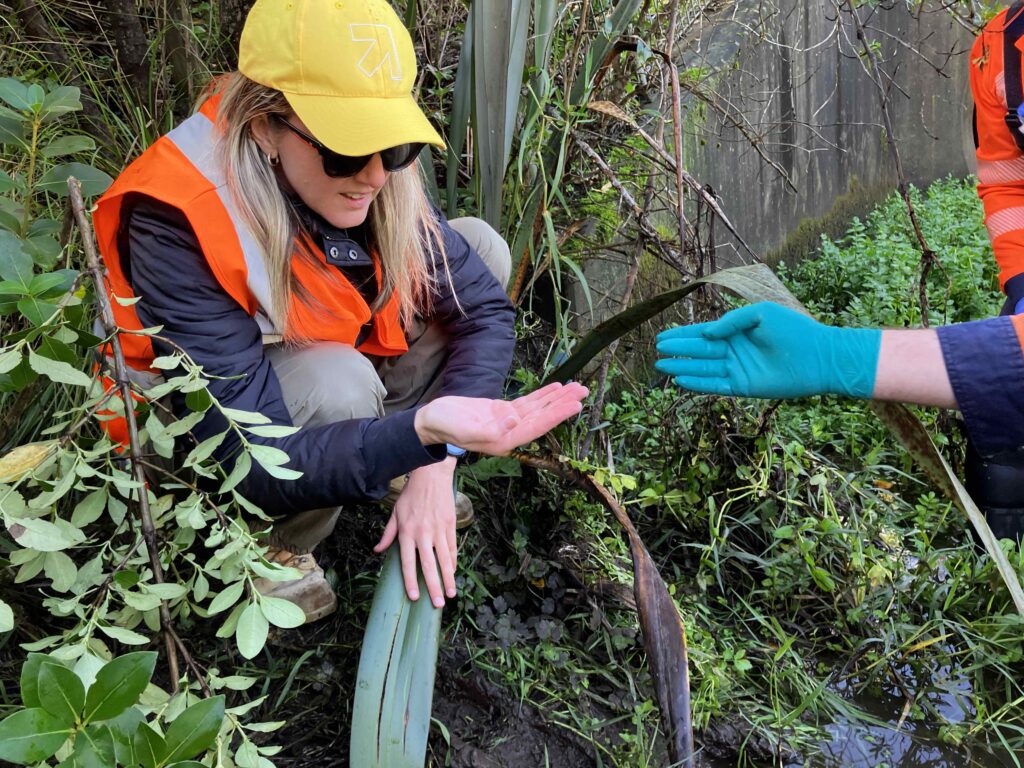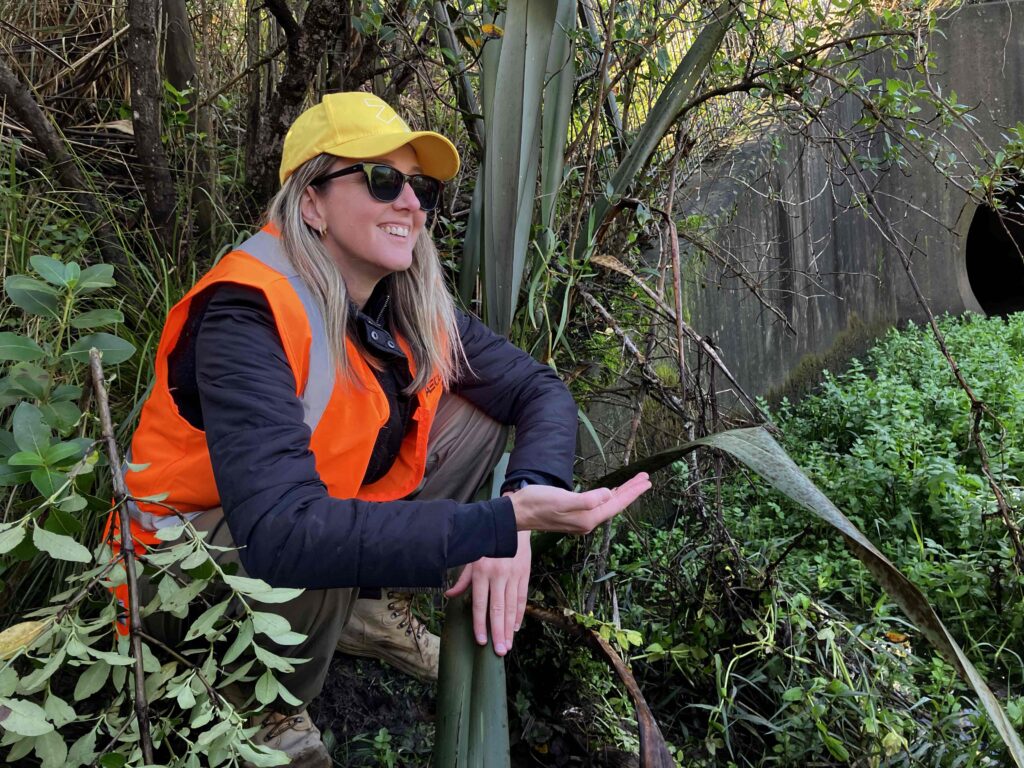People Spotlight: Meet Kelly Pearsall
Our People Spotlight series gives you an inside look at our technical experts around the world. This week we are highlighting the Director of environment from our Australia and New Zealand region and providing an insight into her inspiration and work.
Kelly has worked in the environmental field for more than 20 years. As Director of Environment and TechEx Lead (Environment + Energy) for Australia and New Zealand, she drives business growth, technical leadership and capability development across the region.
Kelly’s work spans complex State Significant Infrastructure, international environmental and social assessments, and project governance roles. She’s played a key role in establishing feasibility and securing environmental approvals for some of Australasia’s largest infrastructure projects, including WestConnex (M4 East and M4–M5 Link) in Sydney and the Purari Hydropower Project in Papua New Guinea.
Known for her people-driven leadership, Kelly brings a clear, outcomes-focused approach with strengths in stakeholder engagement, project directorship and aligning environmental performance with our clients’ broader infrastructure goals.
Tell us about what inspired you to join the industry.
I grew up in the 1980s during a time where environmental awareness was growing and the plight to protect our ocean mammals inspired a generation. My sustainability values formed by this exposure at a formative age, combined with frequent opportunities to spend time in nature, with my grandparents and wider family who were all gardeners and spoke fondly of these values.
I was lucky enough to spend my childhood visiting Oatley Regional Park, which contains 45 hectares of Sydney’s prime bushlands, 310 plants species and 107 bird species. The opportunity to study this biology and be part of protecting it was ultimately what drove me to make a career for myself in environmental consulting at a time when it was only burgeoning.
I started out as an ecologist, and early in my career developed a broad base of experience in smaller town planning and environmental consultancies. I’ve taken opportunities to gain experience in the full gamut of disciplines, from noise and air monitoring, koala surveys, water treatment, impact assessments, master-planning, project management, expert witness reporting, permitting, detailed design development and construction management. My ‘say yes’ mindset allowed for rapid growth in diverse skills and associated responsibility.
Having such a broad experience-base led me to realise that where I could make a material difference was by bringing an ‘ecosystem mindset’ to early phase project definition, connecting and collaborating with clients and in-house designers at an organisation like AECOM.
I was lucky enough to spend my childhood visiting Oatley Regional Park, which contains 45 hectares of Sydney’s prime bushlands, 310 plants species and 107 bird species. The opportunity to study this biology and be part of protecting it was ultimately what drove me to make a career for myself in environmental consulting at a time when it was only burgeoning.
What is your favorite AECOM project that you’ve worked on and why?
My favourite types of projects overall are those where I can work collaboratively in shaping the project with a client. One that stands out was my role as the Australian Environmental Lead for the Purari Hydropower Project, a pre-feasibility project for a hydropower plant in Papua New Guinea (PNG). We assessed the potential to send power by cable from PNG and through a 1,300kilometre high-voltage transmission line to Far North Queensland (FNQ), Australia.
I collaborated closely with clients including EDF, Origin Energy and PNG Energy Developments Ltd, and AECOM’s trans-Tasman team. The feasibility project focused on identifying, evaluating and refining high-voltage transmission corridor and route options across remote Pacific island regions. This involved navigating challenging terrain, including large, dense rainforests and wild rivers.
I coordinated our team’s reconnaissance mission by light aircraft over the Torres Strait Islands and Far North Queensland — an unforgettable career highlight. We conducted fieldwork and extensive GIS mapping to inform the design and multi-jurisdictional planning approval pathways of the project, to meet World Bank Sustainable Development Principles and Australian Commonwealth standards. We also conducted extensive in-country social mapping, including Indigenous and stakeholder consultations in both FNQ and PNG. These insights directly informed the development of stakeholder engagement strategies and Indigenous Land Use Agreement planning for future stages of this multinational energy transition project.
I coordinated our team’s reconnaissance mission by light aircraft over the Torres Strait Islands and Far North Queensland — an unforgettable career highlight.
Tell us a story of how your work positively impacted the community.
As Environment Lead, I oversaw the construction of a 17-kilometre desalination pipeline project through urban and contaminated areas, and across Botany Bay. This project delivered significant community benefits, most notably enhancing Sydney’s drinking water security during drought.
We engaged the community extensively during this project and embedded the local benefits we identified during this engagement. These benefits included the creation of a parkland on the shores of Botany Bay, adding beach accessibility platforms in the suburb of Kurnell and including public art along the pipeline route. Through our environment-led design approach, we successfully avoided adverse environmental and community impacts, while restoring native vegetation in the corridor adjacent to the nearby RAMSAR wetlands.
Our alliance that designed, permitted and delivered this project over a three-year period won several design and construction awards for our work.
Through our environment-led design approach, we successfully avoided adverse environmental and community impacts, while restoring native vegetation in the corridor adjacent to the nearby RAMSAR wetlands.
Share a piece of career advice.
Say yes. Take on the less glamorous tasks and problematic projects, be collaborative and complete them well. You’ll reap the opportunities and choices that flow from this.
Don’t go dark on clients or your internal peers, especially if you have a delay or issue, get in front of it and show you’re acting fast to resolve it.
As you progress in your career, look for opportunities for your team and elevate their profiles in your networks, use your local, regional or global platform.
Lastly, stay curious, and think broadly about who else you can bring in to your team to solve your clients’ complex issues.









